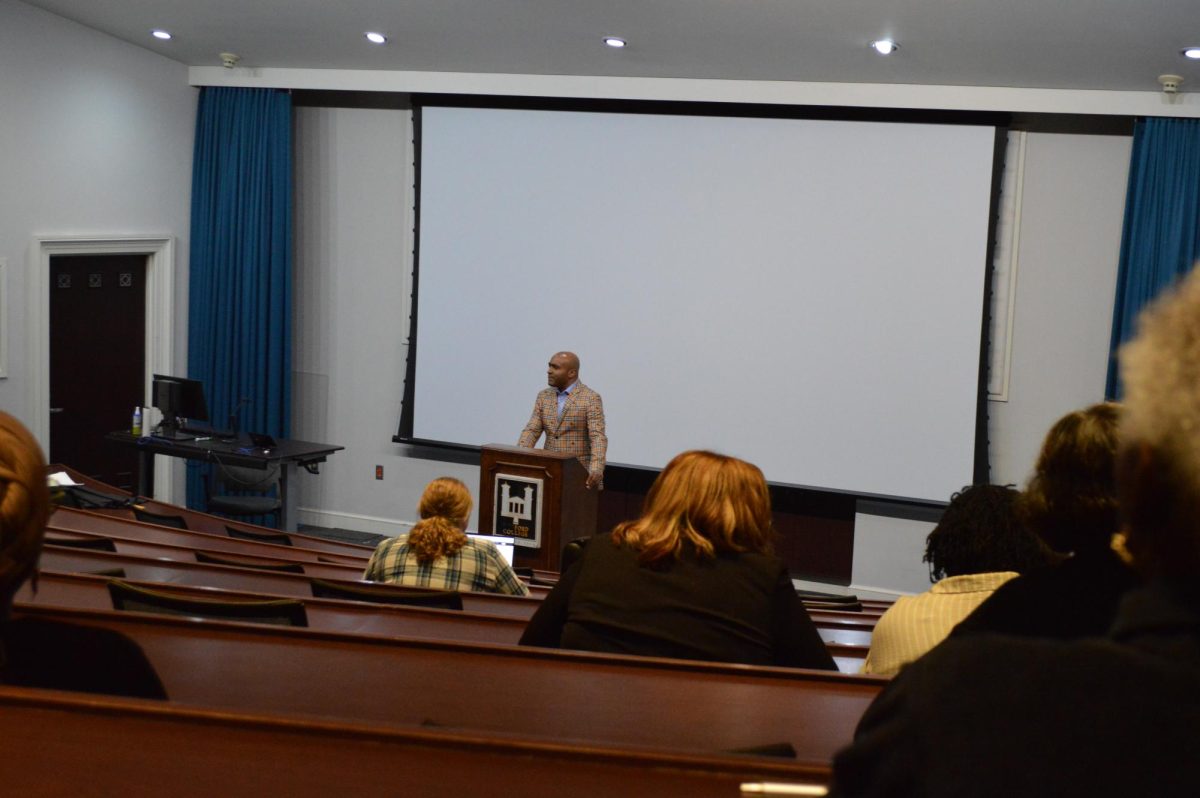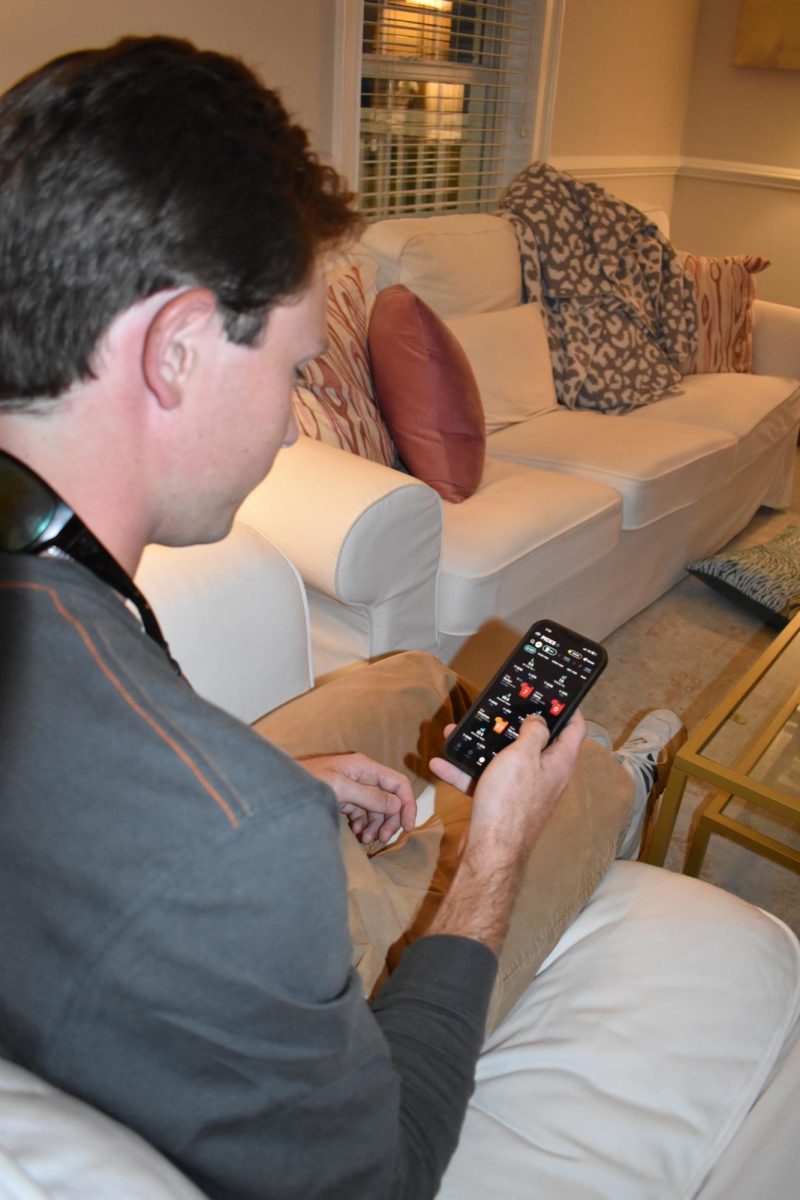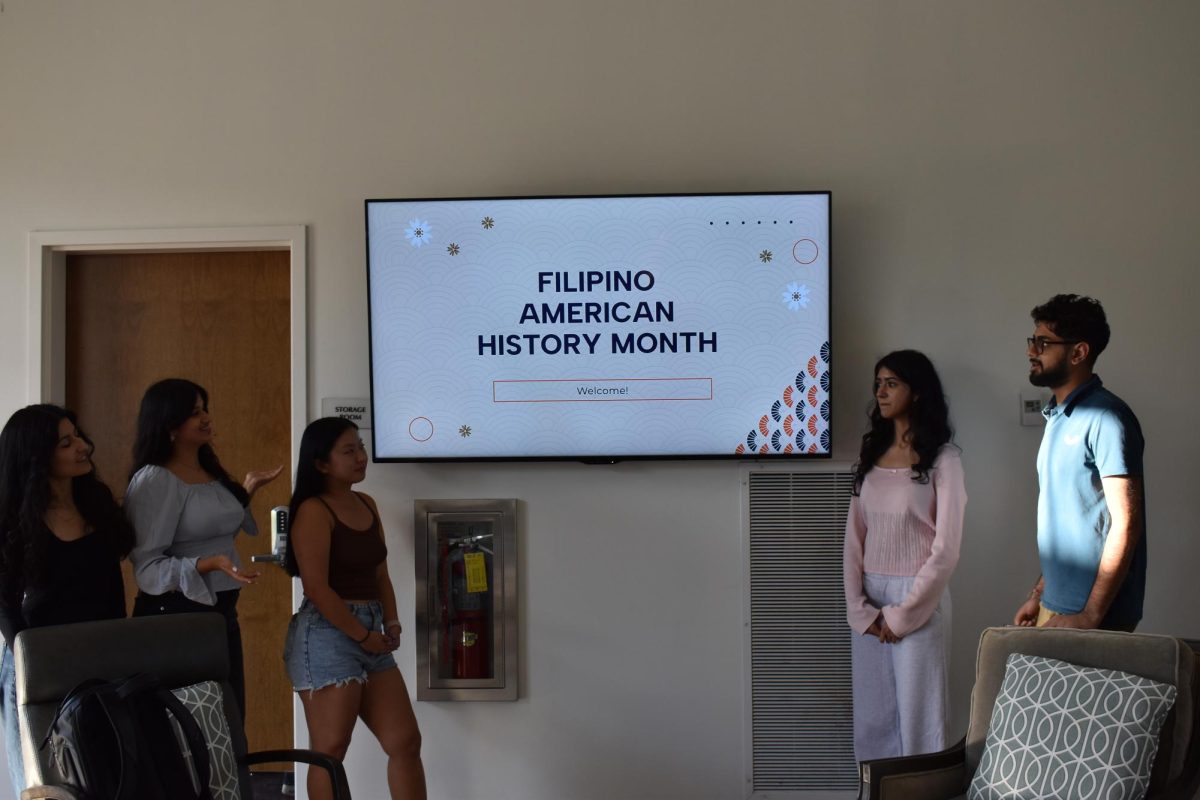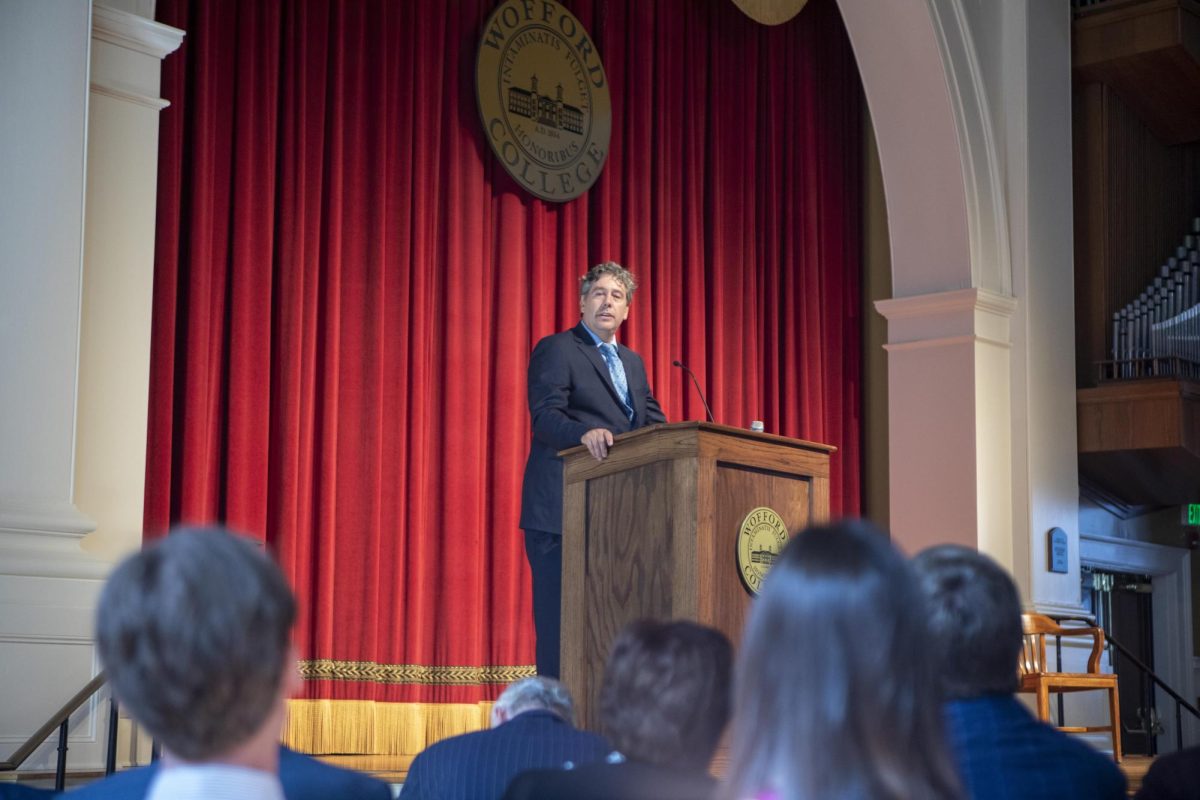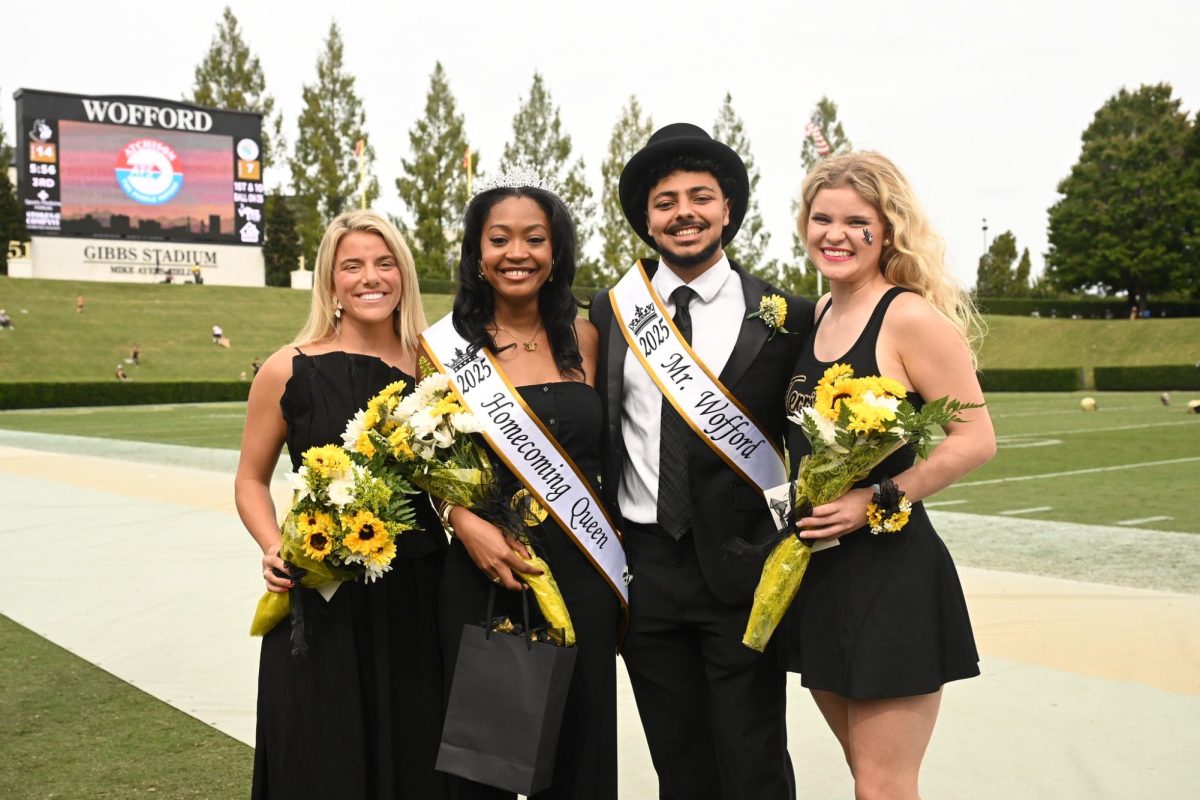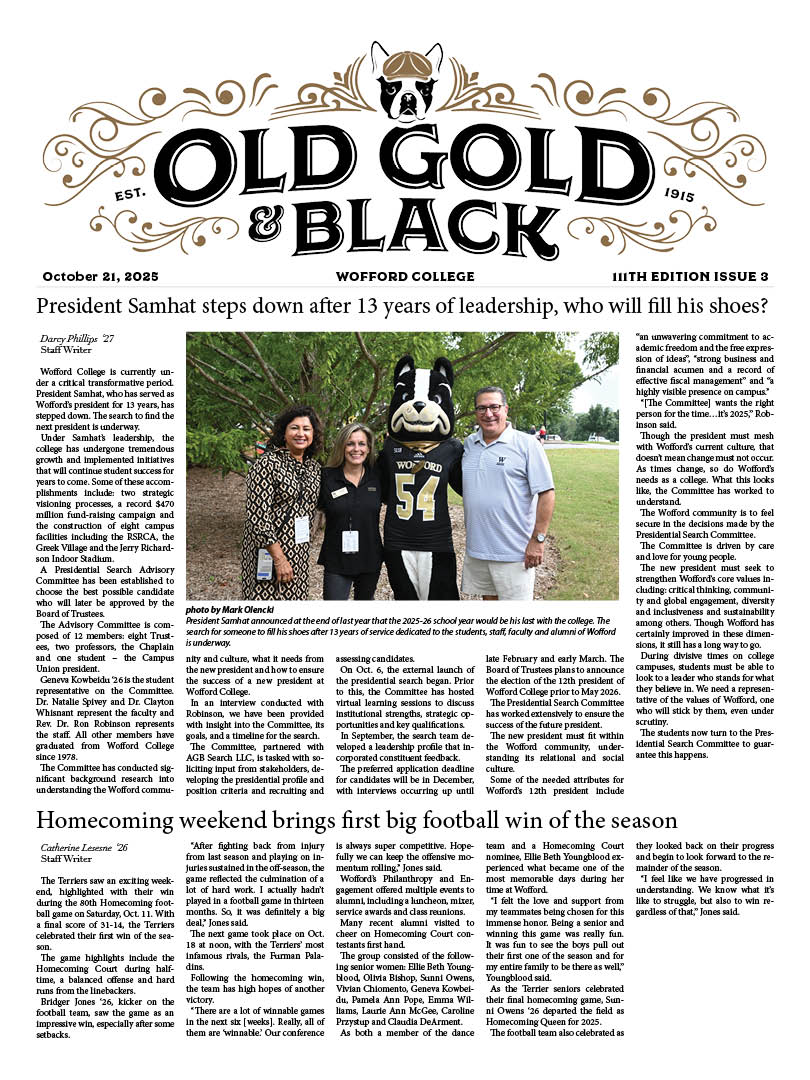What sets the two predominant Christian organizations apart? What brings them together?
At first glance, the differences between Reformed University Fellowship (RUF) and Campus Outreach may appear to be crystal clear. One side of the aisle seems to be populated with Greek students and frequenters of the row while on the other side sit students who prefer a night in and who are not overtly Greek.
Did you just associate one of those descriptions with either RUF or Campus Outreach? You probably are not the only one.
Structurally, the two organizations hardly differ at all. RUF is affiliated with the Presbyterian Church in America, for example, while Campus Outreach holds an interdenominational profile. The organizations both meet at night, RUF on Tuesdays at 9 pm in McMillan Theater and Campus Outreach has found a home in Leonard Auditorium for the time being where they gather on Wednesday nights at 9 pm.
The meetings bear little resemblance, however, save for the time set aside at the beginning of them for announcements. At Campus Outreach students lead and welcome congregants to the meeting before playing a game. Following the game is a time of testimony which precedes a lesson.
Participants described RUF with more structure, beginning with announcements that are followed by the reading of a passage from the Bible — a portion of the meeting referred to as “the call to worship” which, as implied, is followed by worship. A lesson succeeds a student-led band and the meeting concludes with a final song and an acapella singing of the doxology — a brief hymn.
Similarly, they differ along the lines of leadership with Michael Harpe at the helm of Campus Outreach and Matt Patrick over RUF. Harpe, a Wofford graduate who previously served Campus Outreach at Western Carolina, and Patrick, a graduate of the University of Alabama in Huntsville who attended Covenant Theological Seminary.
So why are systems of classification embedded into students’ psyche when they picture the two main Christian groups on campus? More importantly, what makes students feel as though one organization is a better fit than the other? Surely it boils down to more than choosing between playing games before a Biblical lesson or singing songs.
Jordan Holmes ‘21 was looking to get involved with a campus ministry her freshman year at Wofford and, like many, she tested the waters, attending both Campus Outreach and RUF her first semester. After the Campus Outreach New Year’s conference, Holmes became more connected with the organization and chose to put down roots within it.
Campus Outreach also appealed to Holmes because there was a female staff member that was in place that was able to mentor her and sit down for the occasional coffee date.
“I think they have the same goal but just different structures,” said Holmes about RUF and Campus Outreach, and a question that she raised was why there was not more collaboration between the two seemingly-equally-yoked organizations.
Franny Ford ‘21 also tested the waters her freshman year, attending both RUF and Campus Outreach before choosing one over the other. One of the biggest factors that drew Ford to RUF was that many of her friends decided to go the RUF route and join what she described as the “RUF community.”
Ford liked that RUF branched out of their weekly meetings with coffee dates, lunches and Monday night dinners, which she said made RUF “feel like more of a lifestyle, rather.”
Her involvement led her to sign a contract to join the leadership team, which is a commitment to attend a majority of the meetings, help out within the organization and meet with younger RUF students. She described RUF as a stone thrown into a pond, with a tight-knit, dedicated group of students in the middle that are “full send” and the outer rings as representative of students who are not involved and therefore further from the center.
Overall, Ford thinks that having two organizations on campus is good because it provides people with options considering the diverse religious backgrounds from which people come. She has noticed a “big Greek life crowd” within the group and attributes it to older students influencing younger students, adding that it is “natural to follow their lead.”
However, both Harpe and Patrick disagree that there is an imbalance between Greek and non-Greek students because neither of the organizations keep records of who comes.
So where does the myth come from? Is it a myth at all? Is the split that the campus community believes to see in front of them only an enigma that further exemplifies one of the knobs that Wofford continuously gets its belt loop caught on?
It is Wilson Oswald ‘21, the Campus Outreach president’s perspective that there does seem to be a correlation between Greek letters and which religious organization students end up in. Just in the way that partiers go to one Greek organization or more laid back people go to another, Oswald said it’s “funny I guess that ministry falls in line with the reputation, it’s just passed down.”
There is no nomenclature available for the species of students who flock to McMillan or Leonard in search of a religious community. As college students and creatures of classification, however, we use an elementary vocabulary to call something with wings a bird and something with fur a mammal when that might not be the case at all.
“The common denominator between us is that we love Jesus,” Oswald said. “There’s nothing that can divide us; nothing on race lines, sex lines, Greek life affiliation. There’s nothing that should be dividing us. And I think that the most faithful people in both ministries know that at the heart, and it’s just myths that divide us — the weird over-identification with Greek life, which occurs a lot on our campus.”


